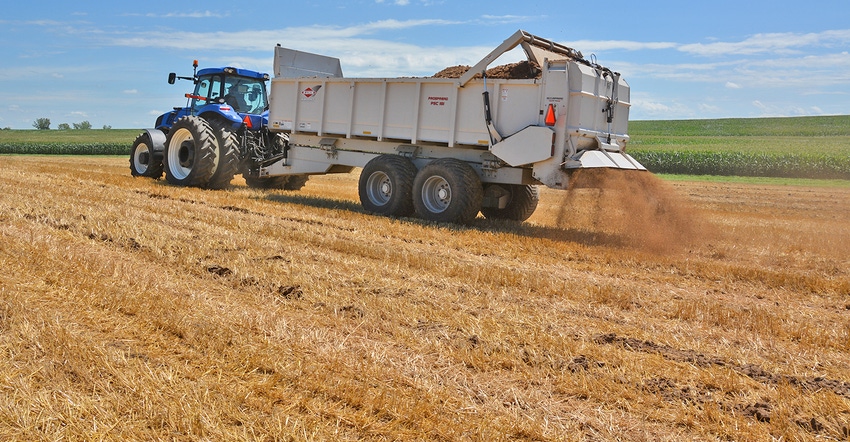February 23, 2018

While I marvel at the amazing level of science and technology use on farms today, I ponder the path by which we reached this point.
From the very first use of manure as plant food, research has been the key. Throughout time, the rate of change has certainly changed, as has the list of factors observed and how they are measured. The role of researcher has also evolved. The net effect has been steadily improving crop output and improvement in the efficiency of nutrient use, which is widely recognized as a factor in protecting water resources.
Farmers have always played a role in the research that has led to these improvements, but their role has also evolved. I would imagine the very first research having taken place on-farm, with a farmer simply observing that a crop grown with manure produced more than one grown without. There were no land-grant universities or fertilizer industry agronomy experts involved — just farmers.
Researchers theorize that the earliest use of manure as plant food began sometime between 3,000 and 8,000 years ago, a wide window in time probably reflective of the much slower pace of change back then.
Fast-forward to the early 1900s. Land-grant institutions such as our University of Minnesota had been established. Higher-level research was conducted by university researchers, with more comparisons and greater precision of measurement. Their research was often guided by farmers, who helped identify research needs and ultimately employed the emerging ideas on their farms, helping sort out those practices that worked at field scale from those that did not. This early research was often funded by taxpayers.
Recent trends in research, guided by farmer-identified needs and societal pressures, have resulted in nutrient-related research that also measures water impacts associated with nutrient use. Stewardship has grown from simply farming the land, to farming and taking care of the land.
More recently, we have seen a major increase in nutrient research conducted within the private sector. Fertilizer manufacturers seek to improve their products and profit from sales. This is troubling to some, but in my experience, these industry players have also come to understand and accept the responsibility to support improvements in stewardship of inputs to reduce environmental impacts. This research is also guided by farmers, and since it is private-sector, it must pay if it is to survive. Much of the funding for this research is provided by farmers through the fertilizer marketplace.
University-based research continues to have value. Some concepts may be too early to attract industry investment and can only be undertaken in the public sector. Farmers report that this independent analysis and verification of industry studies is very important.
Farmer-funded research
Finally, the farmer continues to play a key role. Originally the sole nutrient researchers, today farmers collectively guide many of the researchable questions. They often conduct research on their own farms, either on their own or in partnership with industry or university professionals, and they have been leaned on heavily to fund much of this work.
Minnesota farmers support nutrient research through their commodity checkoff programs. The Minnesota Corn, Soybean and Wheat Research and Promotion councils are three examples of farmer-funded, farmer-directed research programs. I encourage you to view their websites or contact them directly for more information. University of Minnesota research funded by these programs is also widely available.
The Agricultural Fertilizer Research and Education Council is another important funding partner providing useful information for Minnesota farmers. Funded by a 40-cent-per-ton fee charged on all fertilizer sold in Minnesota, it generates about $1 million annually. Decisions about how these funds are to be spent are made by a council comprised mostly of farmers and agronomists. If you would like to learn more about the long and growing list of AFREC-funded projects, go to mnsoilfertility.com/research. Simply click on the title of a project that interests you to view a summary, and then click on “read full article” for more detailed information.
As with commodity council-funded research, the AFREC program helps connect this vital research back to you, the farmer — recognizing that these are your dollars and striving to make information available to you that both improves your bottom line and protects natural resources.
Formo is executive director of the Minnesota Agricultural Water Resource Center.
About the Author(s)
You May Also Like






